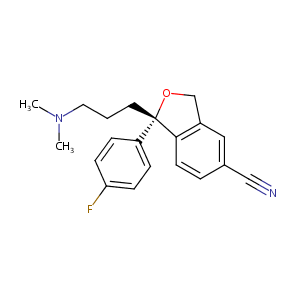| 1 |
ClinicalTrials.gov (NCT00813735) Eszopiclone Co-Administered With Escitalopram for Insomnia in Elderly Adults With Major Depressive Disorder
|
| 2 |
URL: http://www.guidetopharmacology.org Nucleic Acids Res. 2015 Oct 12. pii: gkv1037. The IUPHAR/BPS Guide to PHARMACOLOGY in 2016: towards curated quantitative interactions between 1300 protein targets and 6000 ligands. (Ligand id: 7429).
|
| 3 |
Drugs@FDA. U.S. Food and Drug Administration. U.S. Department of Health & Human Services. 2015
|
| 4 |
New hypnotics: perspectives from sleep physiology. Vertex. 2007 Jul-Aug;18(74):294-9.
|
| 5 |
Substrates, inducers, inhibitors and structure-activity relationships of human Cytochrome P450 2C9 and implications in drug development. Curr Med Chem. 2009;16(27):3480-675.
|
| 6 |
Eszopiclone, a nonbenzodiazepine sedative-hypnotic agent for the treatment of transient and chronic insomnia. Clin Ther. 2006 Apr;28(4):491-516.
|
| 7 |
Antidepressants and sleep: a review. Perspect Psychiatr Care. 2009 Jul;45(3):191-7.
|
| 8 |
PharmGKB summary: citalopram pharmacokinetics pathway. Pharmacogenet Genomics. 2011 Nov;21(11):769-72.
|
| 9 |
CYP2D6 P34S Polymorphism and Outcomes of Escitalopram Treatment in Koreans with Major Depression. Psychiatry Investig. 2013 Sep;10(3):286-93.
|
| 10 |
Escitalopram pharmacogenetics: CYP2C19 relationships with dosing and clinical outcomes in autism spectrum disorder. Pharmacogenet Genomics. 2015 Nov;25(11):548-54.
|
| 11 |
Serotonin transporter promoter region polymorphisms do not influence treatment response to escitalopram in patients with major depression. Eur Neuropsychopharmacol. 2009 Jun;19(6):451-6. doi: 10.1016/j.euroneuro.2009.01.010. Epub 2009 Mar 9.
|
|
|
|
|
|
|


